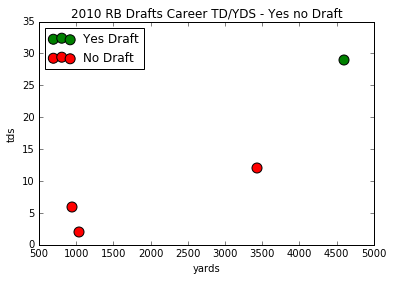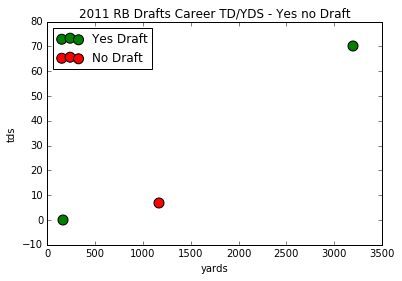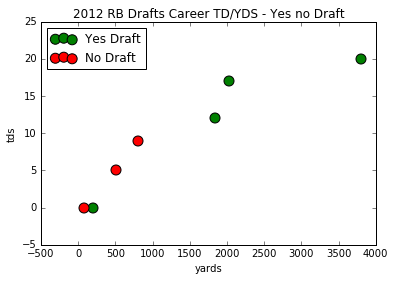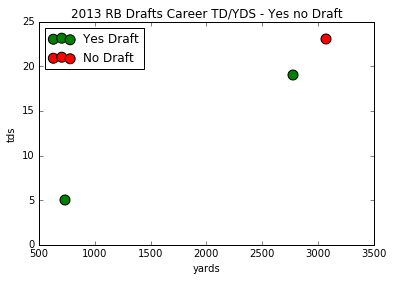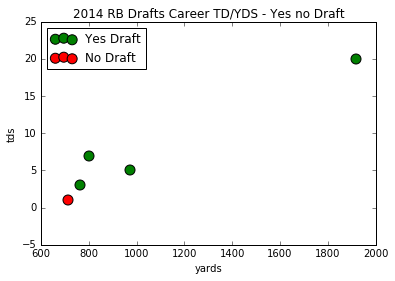The following is a list of the 2016 running backs drafted in the order they were taken. After the name of the team that took them, we compare the draft picks with out Machine Learning running back analysis system to see what teams took “yes” players and which teams took “no” players. The players are rated yes or no if they would have been drafted and the probability the system thinks they fit in that category.
- Ezekiel Elliot – Cowboys – Yes – 99.862 %
- Derrick Henry – Titans – Yes – 99.91 %
- Howard Jordan – Bears – Yes – 99.992 %
- Devontae Booker – Broncos – Yes – 99.994%
- Kenneth Dixon – Ravens – Yes – 99.79%
- Paul Perkins – Giants – Yes – 99.98%
- CJ Prosise – Seahawks – No – 97.16%
- Alex Collins – Seahawks – Yes – 99.991%
- Kenyan Drake – Dolphins – No – 99.28%
- Jonathan Williams – Bills – No – 97.98%
- Tyler Ervin – Texans – No – 98.44%
- Kelvin Taylor – 49ers – No – 98.90%
- Keith Marshall – Redskins – No – 98.79%
- Daniel Lasco – Saints – No – 98.30%
- DeAndre Washington – Yes – 99.993%
- Andy Janovich – Broncos – No – 97.38%
- Wendell Smallwood – Eagles – No – 97.16%
- Dwayne Washington – Lions – No – 99.22%
- Dan Vitale – Bucs – No – 98.68%
- Derek Watt – Chargers – No – 96.89%
- Keenan Reynolds – Ravens – Yes – 99.18%
- Zac Brooks – Seahawks – No – 97.79%
- Darius Jackson – Cowboys – No – 98.15%


